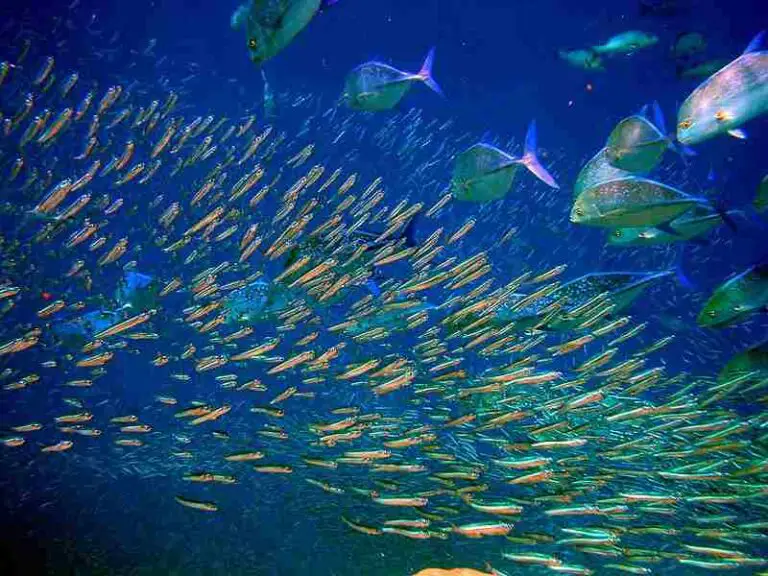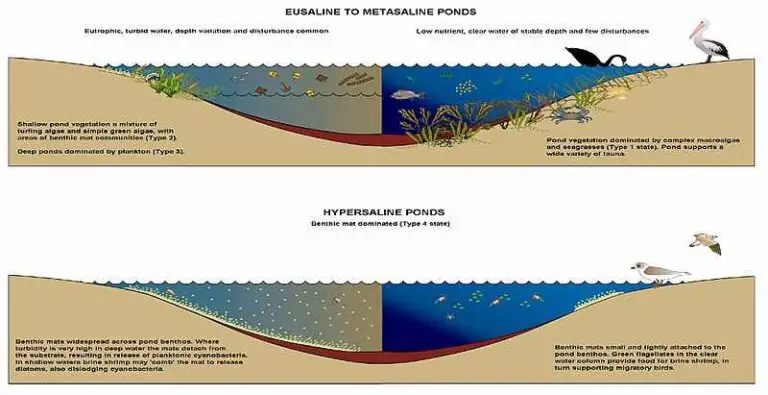Global Warming Definition, Facts, Causes and Relationships
Global Warming is a continuous rise in average atmospheric temperature, close to the Earth’s surface.
In this article, Global Warming is extensively defined based on the following perspectives;
1). Global Warming Definition: What is Global Warming?
3). Global Warming and Climate Change
4). Global Warning and Greenhouse Emission/ Gases/Effect
5). Global Warming and The Paris Agreement
6). Global Warming and Weather Events
7). Global Warming and Melting of Glaciers in Polar Regions
8). Global Warming and Sea Level Rise
10). How Human Activities have Contributed to Global Warming
What is Global Warming? The Best Global Warming Definition
The phenomenon of rising atmospheric temperatures is known to have been occurring for several decades already.
Global Warming became a prominent topic beginning from the mid-twentieth century, when scientists began to compile data from different research investigations and measurements, of elements and aspects of the weather, like precipitation and temperature [24]. By measuring these weather elements, the condition of the climate and its effects on the atmosphere, land and oceans, were soon understood.
A well-rounded definition of Global Warming will include the role played by human beings in leading to its occurrence. Such a definition will acknowledge that global warming is the gradual heating of the atmosphere close to the Earth’s surface, over a prolonged period of time, as a result of human activities that trap and retain heat in the lower atmosphere [23].
A good example of human activities which contribute to global warming are exploration, processing and usage of fossil fuels like coal, natural gas and petroleum [20]. These activities have been very prominent since the mid-nineteenth century.
Fossil fuels contribute to global warming because they may easily expel greenhouse gases. These gases include the derivatives of the extraction and burning of hydrocarbons. Greenhouse gases include nitrous oxides, sulfuric oxides, carbon dioxide, methane and water vapor, which when present in the atmosphere, can lead to the Greenhouse Effect. Global Warming affects all aspects of the environment, including the air, water and land [7].
Global Warming Facts
1). The greenhouse effect is the primary cause of global warming, and it involves the formation of a blanket of greenhouse gases in the lower atmosphere, which trap heat close to the Earth surface
2). Large-scale emission of greenhouse gases began mainly from the early eighteenth century, when there was an increase in the usage of internal combustion engines
3), Essentially, greenhouse gases are meant to make the Earth more conducive for living organisms, by warming-up the atmosphere. However, the greenhouse effect has been very intense and harmful due to an excessive amount of these gases in the atmosphere, as emitted from fossil fuel combustion facilities and processes
4). The amount of carbon dioxide released from fossil fuel combustion is up to at least 25 percent of total atmospheric carbon dioxide
5). Global Warming has caused a sea level rise of at least 8 inches since the year 1870
6). Natural disasters caused directly by global warming include heat waves, which have caused several deaths especially among the very young and the elderly in our society
7). The effects of Global Warming on the environment are numerous and obvious. They include melting of glaciers in polar regions, sea level rise, changes in the distribution and habitat of species, desertification and drought, among others
8). In the United States, the last 50 years has seen a rise in atmospheric temperature by at least 2°C. due to global warming
9). Most greenhouse gases like methane, carbon dioxide and nitrous oxide, remain in the atmosphere for a relatively long period of time after the are emitted. This makes it more difficult to address the problem of global warming
10). As a result of Global Warming, marine organisms and features like coral reefs are in danger of being eliminated
11). Studies have shown that many living organisms may not be able to adapt to the rapid rate of global warming on Earth
12). A 2007 report by the IPCC predicts that sea levels will rise further by 7-23 inches due to Global Warming, by the end of the twenty-first century
13). Global Warming has affected the Arctic region very severely in recent years, with large-scale shrinkage of glaciers. It is predicted that by 2040 or earlier, summer period will be totally ice-free in the Arctic
14). Natural hazards like heatwaves, droughts, flooding and forest fires are expected to become more frequent and intense in coming years
15). The rate at which human activities are producing greenhouse gases is far more than the rate at which these gases can be absorbed by plant photosynthesis and other natural processes
16). Sea level rise (due to Global Warming) has exposed millions of humans to the danger of flooding, tsunamis and other marine-related natural hazards, especially in coastal regions
17). Countless organic species have been driven to extinction by the effects of global warming which have either destroyed or polluted their natural habitats
18). While global warming causes flooding in some regions, it also causes dryness and drought in other regions
19). The first decade of the twenty-first century has been one of the hottest in the entire history of the Earth
20). Asides Global Warming, the release of greenhouse gases has led to environmental pollution, (mainly respiratory) illnesses and deaths across the world
21). At least 34 billion tons of carbon dioxide (CO2) are released from human activities per year
22). In spite of efforts to develop renewable energy technologies, fossil fuels still account for approximately 80 percent of energy in the United States and most other countries (as at 2021)
23). Global Warming is increasing the prevalence of diseases by making previously cold areas to become warmer and more conducive to disease vectors and pathogens
24). The economic conditions of the global society are very vulnerable to the effects of Global Warming, which can cause serious losses in all major sectors of the economy
25). Global Warming is the major cause of food insecurity, water shortages and biodiversity extinction across the world
26). Tackling the causes of Global Warming is essential if we are to achieve sustainable development, globally. This will also curb the increasing expenditure to address the problems caused by natural disasters
Global Warming and Climate Change
Climate Change and Global Warming are two terns which we often use in similar contexts, or even in place of each other. There are slight differences between the two concepts which we must be aware of.
Global Warming is a more specific, and narrow concept or topic, than Climate Change. To understand this better, we must acknowledge that Global Warming is simply one of the major processes that are involved in climate change. We can also choose to see Global Warming, as one of the Causes or Drivers of Climate Change.
Climate Change covers several other concepts and topics, just as it covers Global Warming. Examples of such concepts covered by Climate Change include Greenhouse Gases/Emission/Effects; Natural Disaster; Food Insecurity; Weather; Landform; Biodiversity; Environmental Pollution; Anthropogenic Activities and Desertification, to name a handful.
Also, because Climate Change is a much broader topic than Global Warming, it involves several more elements. Climate Change deals with basically all elements of the weather and the environment. These would include temperature, pressure, humidity, precipitation, land, air, water, marine environment, and living organisms.
On the other hand, although Global Warming has effects on most of these elements, it is solely driven and defined by temperature. This means that while it is possible to define Climate Change in a very broad manner, to include numerous concepts, elements and processes, we can only define Global Warming on the basis of temperature.
Another distinction between Climate Change and Global Warming can be seen in the area of time. While Climate Change is more of a cumulative assessment or measure of environment conditions over a prolonged period (usually no less than three decades), Global Warming is usually assessed on the basis of comparisons across a period of time (usually in years), rather than a cumulative assessment over a prolonged period.

The following table will further assist us in understanding the minor distinctions between Global Warming and Climate Change;
| Climate Change | Global Warming |
| Is a broader and less-specific concept | Is relatively narrow and very specific |
| Involves several elements of the weather and the environment. including temperature, pressure, and humidity | Solely involves temperature |
| Is defined by weather conditions in general | Is defined by temperature variations |
| Covers Global Warming and other concepts | Is an aspect of Climate Change |
| Is a cumulative measure over a prolonged period of time | Is a comparative measure over a relatively short period of time |
Global Warming and Greenhouse Emission/ Gases/Effect
Global Warming is closely related to the Greenhouse Effect.
To make it much clearer, the greenhouse effect, is seen as a major cause of Global Warming. As scientists have interpreted it, the problem of Global Warming which we have faced for decades so far, is a direct reflection of the impact and consequences of emitting large volumes of greenhouse gases into the atmosphere. This act is Greenhouse Emission, as we know it, and the resulting condition is called the Greenhouse Effect [10].
Global Warming is itself the primary consequence of Greenhouse Emission, and the grand expression of the Greenhouse Effect. When human activities cause the emission of greenhouse gases into the atmosphere, these gases accumulate. They form a layer of greenhouse gas matter, which has the ability to trap and retain heat from solar radiation, for a long period of time.
The retention of heat by accumulated greenhouse gases in the lower atmosphere, ultimately leads to the warming of the Earth’s surface. This is what we experience as the phenomenon of Global Warming.
Because most greenhouse gases tend to remain for a long period of time in the atmosphere, Global Warming has become a permanent and intensifying phenomenon, which can only be tackled by effectively removing the accumulated greenhouse gases in the atmosphere.
Below is a brief discussion of the main greenhouse gases which are released into the atmosphere by human activities;
1). Carbon dioxide (CO2)
Carbon dioxide, (CO2) is a colorless, acidic gas which has a sour taste and a faint sharp odor [3]. This gas is a very important cause of global warming. However, carbon dioxide can be found in the atmosphere, naturally. It makes up about 0.04% of the natural composition of air.
CO2 is also naturally produced in the process of decomposition of organic materials, in respiration of living organisms, in fermentation of carbohydrates, and in combustion.
The gas acts as a greenhouse gas, by absorbing a portion of the radiant energy from the sun (and from the Earth’s surface) and preventing it from being lost in the upper atmosphere.
By retaining the heat energy from the sun, CO2 contributes to the greenhouse effect. It is industrially recovered from lime kilns and flue gases, among others.
Carbon dioxide may enter the atmosphere as a result of the combustion of fossil fuels, and other forms of biomass. It may also be removed from the atmosphere in the process of carbon sequestration [21].
2). Methane (CH4)
Methane refers to an odorless, and colorless gas which is naturally-occurring and may also be produced from some human activities.
It is a highly potent greenhouse gas and has the chemical formula CH4.
Methane has a lower density than air, and is slightly soluble in water. However, in air it burns with a pale flame to form water vapor and carbon dioxide. It is a generally stable gas, but when mixed with air, is usually explosive. It is the sole cause of most mine explosions.
Methane is emitted in the production and usage of fossil fuels. It may also be emitted from livestock farming and other agricultural processes, as well as from the decomposition of municipal waste material in landfills and other dump sites.
3). Nitrous oxide (N2O)
N2O is one of the major greenhouse gases. It has been found to be very instrumental in causing climate change.
While N2O as a gas is produced naturally, in soils and oceans, it has also been found to be a product of human activity as well.
Concentrations of N2O in the atmosphere have risen in recent time. Between 1940 and 2018, the gas has increased from approximately 290 parts per billion to 331 parts per billion.
A significant proportion of N2O emissions are produced from agricultural processes. These are mostly due to the activities of microbes in soils. These microbes break down manure and nitrogen-based fertilizers in the soil, releasing nitrous oxide gas. The process is known as Denitrification.
Aside agriculture, N2O gas can be produced from waste water, chemical manufacturing processes, and fossil fuel combustion.

In the upper atmosphere, N2O is usually removed by sunlight. However, due to the fact that this gas is generated at a much faster rate, it continues to be accumulated in large concentrations, leading to ozone layer depletion and global warming.
N20 is up to 300 times as potent as carbon dioxide (CO2). It also has a typical lifetime of 116±9 years in the atmosphere.
When N2O comes in contact with ozone molecules in the atmosphere, it destroys them, leading to ozone depletion on a large scale.
As a greenhouse gas, N₂O has 300 times the warming potential of carbon dioxide (CO₂) and stays in the atmosphere for an average 116 years [5].
It’s the third most important greenhouse gas after CO₂ (which lasts up to thousands of years in the atmosphere) and methane.
N2O is currently not banned under the 1987 United Nations Montreal Protocol. This is partly because it listed as an essential medicine by the World Health Organization.
It is however restricted by the Council of the London Borough of Lambeth (UK), and there have been measures to reduce its production in many countries
4). Fluorinated Gases
Fluorinated gases (or F-gases) refer to a group of anthropogenic gases which are utilized typically in different industrial processes. In order to mitigate climate change, regulatory policies have been developed in the EU and other regions.
Although Fluorinated gases are effective greenhouse gases, they do not generally destroy ozone molecules or cause ozone layer depletion.
However, they are responsible for contributing significantly to the greenhouse effect. and global warming. Fluorinated gases are known to have a potency of about 23,000 times that of carbon dioxide (CO2) with respect to causing global warming [13].
Fluorinated gases include perfluorocarbons, hydrofluorocarbons, nitrogen tri-fluoride and sulfur hexafluoride. These gases are often used in place of other chemicals and gases like which deplete the ozone layer in the stratosphere.
4a). Hydrofluorocarbons
Hydrofluorocarbons (HFCs) can be considered to be the most important group of fluorinated gases with respect to climate change and the greenhouse effect.
They are basically a group of highly active greenhouse gases which are industrially manufactured for various purposes. These purposes include air conditioning, aerosols, foam blowing, refrigeration. solvents and fire protection.
In contrast to other greenhouse gases, hydrofluorocarbons are not usually produced as waste products.
They are generally produced as a substitute to ozone depleting substances, most of which have been restricted by the UN Montreal Protocol. This is because they do not actively contribute to ozone layer depletion.
The use of hydrofluorocarbons has increased greatly over the years, and this has potential effects on climate change and global warming. Also, hydrofluorocarbons comprise approximately 1-3% of the overall greenhouse emissions globally. [8]. It is estimated that this will increase to about 7% in the coming years if allowed to progress at the current rate.
4b). Perfluorocarbons
Perfluorocarbons refer to a group of man-made chemical compounds which comprise solely of fluorine and carbon [9].
They are very active greenhouse gases, and are also used in place of ozone depleting substances, due to the fact that they do not destroy ozone molecules. Industrially, perfluorocarbons are used to manufacture semiconductor materials. Other uses include as refrigerants, and solvents.
4c). Sulfur Hexafluoride
Sulfur Hexafluoride (SF6) is an odorless, colorless gas which is synthetic in nature. it is used as an insulating material in electrical systems, for preventing electrical accidents and fore outbreaks [28].
In its pure state, SF6 occurs as a non-flammable and inert gas which is denser than air. It is capable of accumulating in tunnels, trenches and pits. Sulfur hexafluoride may cause asphyxiation when present in air, in volumes of up to 19% [16].
Asides being the most potent greenhouse gas [12], SF6 has a long lifetime of up to 3,200 years in the atmosphere. This implies that even a relatively small volume of the gas can have significant impacts on the environment, leading to greenhouse effect, global warming and climate change.
4d). Nitrogen Tri-fluoride
Nitrogen tri-fluoride (NF3) is simply a chemical which is produced and used industrially. It is especially prominent in electronics manufacturing, including Liquid Crystal Display (LCD) panels, chemical lasers, semiconductors and solar panels [14].
The use of NF3 in industries is a potential problem to the environment. This is because this gas is several times more potent as a greenhouse agent, than carbon dioxide (CO2) and most other greenhouse gases.
The Greenhouse Gas (GHG) Protocol and the United Nations Framework Convention on Climate Change (UNFCCC), both classify NF3 as a contributive cause of climate change [25]. This implies that it is used and produced with restrictions.
5). Ozone
Another, highly significant example of a greenhouse gas which you would need to know, is ozone (O3).
Ozone may be categorized either as ground-level/surface/tropospheric ozone, or stratospheric ozone. We may also think of the two categories as man-made and naturally-occurring ozone.
Ground-level (or Surface) ozone is produced as produced from the reaction between Volatile Organic Compounds (VOCs), Carbon monoxide (CO), and Nitrous oxides (NOx) [10]. The gas causes air pollution, which has negative impacts on human health.
Ground-level ozone is usually emitted from power plants, vehicles, refineries, industrial boilers and chemical manufacturing plants. It is usually more concentrated in urban areas, although it may still occur in rural areas. The average concentration of ground-level ozone in the atmosphere is 10ppb, although this concentration can reach levels of up to 70ppb [4].
Stratospheric Ozone may also be referred to as Natural Ozone. It occurs naturally in the stratosphere. While the low-level or tropospheric ozone is often called “bad ozone”, the stratospheric ozone is often called “good ozone”.
This is simply because; while the ground-level (tropospheric) ozone tends to cause health ailments and air pollution [15], the stratospheric ozone plays a more positive role.
The role of the stratospheric ozone is to protect the Earth from the Sun’s ultraviolet-B radiation (UV-B). It reduces the amount of UV-B radiation which reaches the Earth’s surface, and thereby protects plants and animals. Asides damaging plant cells and stunting their growth, UV-B radiation may cause cancer in humans [1].
Stratospheric ozone functions as a greenhouse gas, because it retains the heat energy of the UV-B radiation in the stratosphere. This heat energy increases the temperature of the atmosphere and the Earth’s surface.
Global Warming and The Paris Agreement
The Paris Agreement is an international, legal treaty, signed by 196 countries in the year 2015 , at the Conference Of the Parties (COP) 21 which was held in Paris on the 12th of December, that same year. On the 4th of December, 2016, the Paris Agreement commenced full implementation [27].
The aim of the agreement is to ensure that global temperature increase is kept below 1.5-2.0°C. Essentially, we can interpret this to say that the Paris Agreement is aimed at combating the Global Warming phenomenon.
It is obvious that in order to achieve the aim of the Paris Agreement, efforts must be made to tackle greenhouse emissions and the industrial processes that lead to them. Such efforts have already begun, and cam be observed in the recent developments in renewable energy technology, electric vehicles, and carbon capture technology.
The Paris Agreement is one of recent, significant international coalitions that have been formed in order to address the threat of Climate Change and its associated problems.
Global Warming and Weather Events
As we have come to understand so far, Global Warming implies rising global temperatures. Such conditions have direct effects on the environment, and ultimately cause extreme weather events.
High temperatures tend to increase the rate of evaporation of water in streams, lakes, rivers and soil, eventually leading to drought [26]. The water vapor released by evaporation, may accumulate in the atmosphere, leading to the formation of clouds and subsequent heavy downpour, storms, and floods. Heat waves may also occur directly as a result of Global Warming.
The rate of occurrence of extreme weather events and related disasters, has multiplied in recent decades. It is believed that this increase is largely a result of Global Warming.
Global Warming and Melting of Glaciers in Polar Regions
Currently, glaciers in the polar regions of the world, are melting at a much faster rate, as a result of Climate Change and Global Warming [2].
It is estimated that approximately 328 billion metric tons of water is added to the oceans every year, from melting glaciers. This is a worldwide phenomenon, meaning that it is occurring in all low-temperature regions on Earth.
The ripple effect of glacial (ice) melting is sea level rise. This may in turn lead to flooding and related natural hazards.
Global Warming and Sea Level Rise
Since 1880, the mean sea level across the globe has risen by approximately 8-9 inches [18]. An even more amazing aspect of this occurrence, is the fact that at least 3 inches of the total rise in sea level within the overall period, happened within less than three decades.
In order for us to understand the role of global Warming in bringing about sea level rise, there are two distinct processes we must consider.
The first of these processes, is the melting of glaciers and ice masses in polar regions. This process is the direct consequence of Global Warming itself, as the impact of solar radiation helps to defrost polar regions and melt ice, subsequently adding to the water volume in oceans and raising global mean sea levels.
The second process involves the thermal expansion of seawater [22]. This occurs due to warming of the water by heat energy from the sun.
In addition to sea level rise, the oceans are growing more acidic, and warm, as a result of Global Warming. This has direct, negative impacts on the marine ecosystem and affects the survival and distribution of sea organisms.
The impact of sea level rise on the environment varies with geographic location, due to topography, ocean and wind current differences, among other factors. However, in general, increased sea level implies high risks of flooding, tornadoes, pollution and other coastal hazards.
It has been predicted by the Intergovernmental Panel on Climate Change (IPCC) that by the year 2100, sea level rise may reach 52-98cm if the underlying issue of Global Warming is left unchecked [6].
Cause of Global Warming
The main cause of Global Warming is human activities. These activities include vehicular transport, energy generation and transmission, manufacturing, industrialization and agriculture, among others.
Human activities such as those which we have just mentioned, usually release carbon dioxide and other potentially harmful gases into the atmosphere. These gases are collectively referred to as Greenhouse Gases, or atmospheric pollutants. They prevent excessive solar radiation from leaving the Earth’s surface into the outer space or the upper atmosphere.
Rather, the greenhouse gases ‘trap’ and absorb the solar radiation, thereby causing it to remain in the lower atmosphere, close to the Earth’s surface. This leads to the gradual and progressive heating of the Earth’s surface, including land, polar regions and oceans, in a process which we may refer to as the Greenhouse Effect [17].
It is also known that natural factors and processes (like volcanic eruption) also affect the atmosphere and climate. However, these processes are not very effective in causing extreme changes in climatic conditions. Human activities like transportation and energy generation, have continuously produced billions of metric tons of greenhouse gases which are the major cause of Global Warming.
How Human Activities have Contributed to Global Warming
As you may easily observe from the discussion so far, human activities are viewed as a primary cause of Global Warming over the past century.
To add to what has already been said, recent decades have seen the multiplication of greenhouse gas emission rates, and human activities in the course of economic development have played a dominant role.
By producing electricity, operating industrial machines and transport systems, fossil fuel combustion (burning) has been made a very common and continuous process. Fossil fuel burning releases gases like carbon dioxide and nitrous oxides into the atmosphere, all of which cause the Greenhouse Effect and Global Warming itself.
The following table shows the average contribution of different economic sectors of the human society, to Global Warming;
| Sector | Percentage Contribution to Global Warming |
| Heat and Electricity Production | 25% |
| General Land Use, Forestry and Agriculture | 24% |
| Industry | 21% |
| Transport | 14% |
| Other Energy Sources | 10% |
| Buildings | 6% |

Conclusion
This article has extensively introduced the concept of Global Warning. We have seen that it involves the continuous rise in average temperatures across the globe.
Global Warming leads to several environmental consequences like sea level rise, polar ice melting, extreme weather conditions, drought, food shortages, climate change, natural hazards, and other related problems.
Greenhouse Emission and the Greenhouse Effect, are both popular terms that relate to Global Warming. As a result of human activities, greenhouse gases like sulfur dioxide, carbon dioxide, methane, water vapor and nitrous oxide, are released into the atmosphere. These gases trap and absorb solar radiation (thermal energy) and prevents it from exiting into outer space, thereby increasing the amount of heat on the Earth’s surface.
The activities of human beings which contribute to global warming include energy production and consumption, industry, commerce, manufacturing, waste disposal and agriculture.
References
1). American Cancer Society (2021). “Ultraviolet (UV) Radiation.” Available at: https://www.cancer.org/cancer/cancer-causes/radiation-exposure/uv-radiation.html. (Accessed 28 November 2021).
2). Amos, J. (2021). “Climate change: World’s glaciers melting at a faster pace.” Available at: https://www.bbc.com/news/science-environment-56921164. (Accessed 28 November 2021).
3). Britannica (2020). “Carbon dioxide”. Available at: https://www.britannica.com/science/carbon-dioxide. (Accessed 28 November 2021).
4). Britannica (2021). “Global Warming.”Available at: https://www.britannica.com/science/global-warming/Surface-level-ozone-and-other-compounds. (Accessed 28 November 2021).
5). Canadell, P.; Davidson, E; Peters, G; Tian, H.; Prather N.; Krummel, P.; Jackson, T.; Winiwarter, W. (2020). “New research: nitrous oxide emissions 300 times more powerful than CO₂ are jeopardising Earth’s future”. Available at: https://theconversation.com/new-research-nitrous-oxide-emissions-300-times-more-powerful-than-co-are-jeopardising-earths-future-147208. (Accessed 28 November 2021).
6). Church, J.; and Clark, P. (2016). “What does the science really say about sea-level rise?” Available at: https://theconversation.com/what-does-the-science-really-say-about-sea-level-rise-56807. (Accessed 28 November 2021).
7). Denchak, M. (2016). “Are the Effects of Global Warming Really that Bad?” Available at: https://www.nrdc.org/stories/are-effects-global-warming-really-bad. (Accessed 28 November 2021).
8). EIA (2015). “What Are Hydrofluorocarbons?”. Available at: https://eia-global.org/campaigns/Climate/what-are-hydrofluorocarbons. (Accessed 28 November 2021).
9). EPA (2020). “Greenhouse Gas Overview.” Available at: https://www.epa.gov/enviro/greenhouse-gas-overview. (Accessed 28 November 2021).
10). EPA (2021). “Climate Change Indicators: Greenhouse Gases.” Available at: https://www.epa.gov/climate-indicators/greenhouse-gases. (Accessed 28 November 2021).
11). EPA (2021). “Ground-level Ozone Basics.” Available at: https://www.epa.gov/ground-level-ozone-pollution/ground-level-ozone-basics. (Accessed 28 November 2021).
12). EPA (2021). “Sulfur Hexafluoride (SF6) Basics.“ Available at: https://www.epa.gov/eps-partnership/sulfur-hexafluoride-sf6-basics. (Accessed 28 Nobember 2021).
13). European Commission (2020). “Fluorinated greenhouse gases.” Available at: https://ec.europa.eu/clima/eu-action/fluorinated-greenhouse-gases_en. (Accessed 25 November 2021).
14). Ford, J. (2021). “What is nitrogen trifluoride used for?” Available at: https://answerstoall.com/users-questions/what-is-nitrogen-trifluoride-used-for/. (Accessed 28 November 2021).
15). Greenfacts (2005). “Air Pollution Ozone.”Available at: http://www.greenfacts.org/en/ozone-o3/index.htm. (Accessed 28 November 2021).
16). IonScience (2021). “Sulfur hexafluoride.”Available at: https://ionscience.com/en/gas-fact-sheets/detecting-sulfur-hexafluoride/. (Accessed 28 November 2021).
17). Lallanila, M. (2018). “What Is the Greenhouse Effect?” Available at: https://www.livescience.com/37743-greenhouse-effect.html. (Accessed 28 November 2021).
18). Lindsey, R. (2020). “Climate Change: Global Sea Level.“ Available at: https://www.climate.gov/news-features/understanding-climate/climate-change-global-sea-level. (Accessed 28 November 2021).
19). McGrath, M. (2019). “Climate change: Electrical industry’s ‘dirty secret’ boosts warming.” Avaliable at: https://www.bbc.com/news/science-environment-49567197. (Accessed 28 November 2021).
20). NASA (2020). “The Causes of Climate Change.” Available at: https://climate.nasa.gov/causes/. (Accessed 28 November 2021).
21). NOAA (2019). “Carbon Cycle”. Available at: https://www.noaa.gov/education/resource-collections/climate/carbon-cycle. (Accessed 28 November 2021).
22). NOAA (2021). “Is sea level rising?” Available at: https://oceanservice.noaa.gov/facts/sealevel.html. (Accessed 28 November 2021).
23). Pappas, S. (2020). “What is global warming?“. https://www.livescience.com/37003-global-warming.html. (Accessed 28 November 2021).
24). Rafferty, J.; and Mann, E. M. (2014). “Global Warming.” Available at: https://www.britannica.com/science/global-warming. (Accessed 28 November 2021).
25). Russell, S. (2013). “Nitrogen Trifluoride Now Required in GHG Protocol Greenhouse Gas Emissions Inventories.” Available at: https://www.wri.org/insights/nitrogen-trifluoride-now-required-ghg-protocol-greenhouse-gas-emissions-inventories. (Accessed 28 November 2021).
26). UCAR (2021). “The Water Cycle and Climate Change.” Available at: https://scied.ucar.edu/learning-zone/climate-change-impacts/water-cycle-climate-change. (Accessed 28 November 2021).
27). UNFCC (2021). “The Paris Agreement.”Available at: https://unfccc.int/process-and-meetings/the-paris-agreement/the-paris-agreement. (Accessed 28 November 2021).
28). Wikipedia (2021). “Sulfur hexafluoride circuit breaker.” Available at: https://en.m.wikipedia.org/wiki/Sulfur_hexafluoride_circuit_breaker. (Accessed 28 November 2021).




